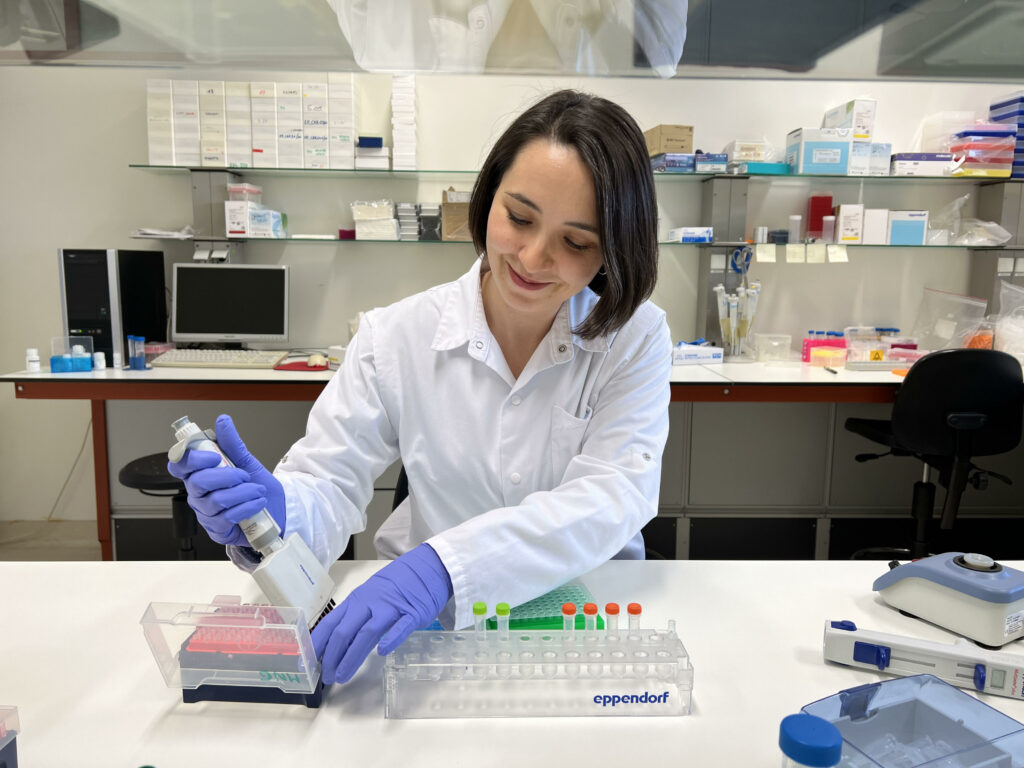
Postdoctoral fellow Dr. Ayşe Candayan-Niron.
I’m Dr. Ayşe Candayan-Niron and I work as a postdoctoral researcher in the Molecular Neurogenomics Group (MNG) led by Prof. Albena Jordanova. I completed my PhD at Bogazici University in Istanbul, Turkiye, under the supervision of Prof. Esra Battaloglu. During my undergraduate and graduate studies, I had the opportunity to visit multiple research centers as a guest researcher, including University College London in the UK, KU-Leuven, Harvard Medical School in the USA, and Prof. Jordanova’s group here at UAntwerp. Being part of many different research groups gave me a unique perspective in which field I would like to work. Eventually, I became a molecular geneticist in the field of rare neurodegenerative diseases.
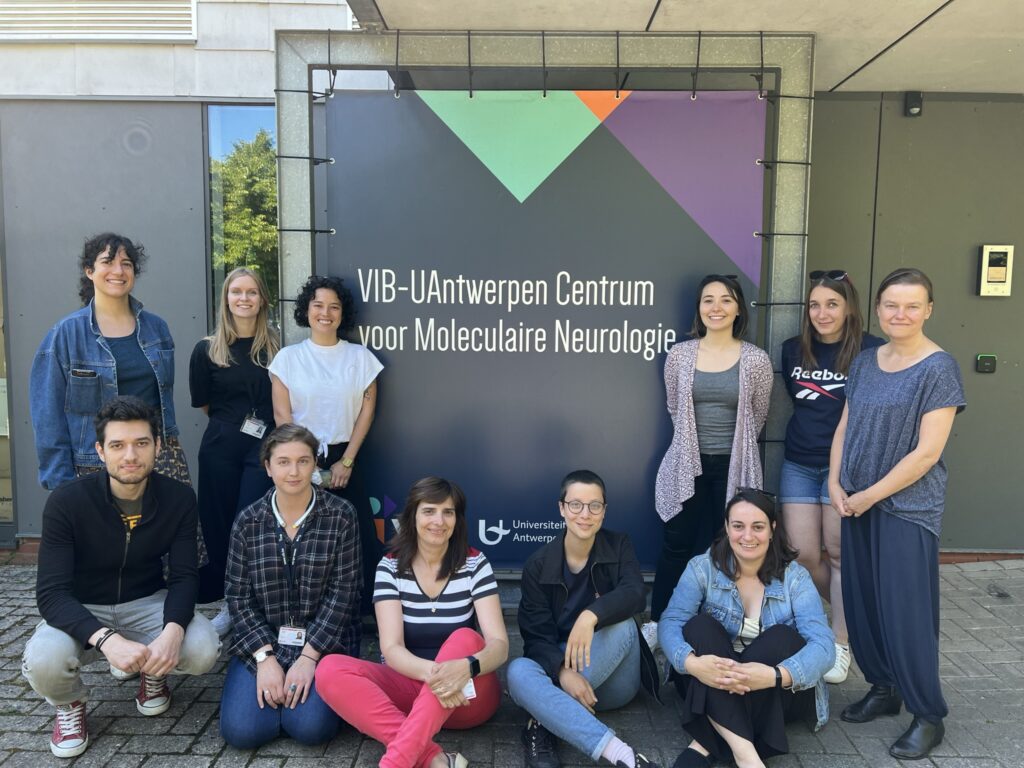
My lab group at the VIB-UAntwerp Centre for Molecular Neurology.
My main research focus is on Charcot-Marie-Tooth (CMT) disease. This is a group of rare inherited disorders affecting the peripheral nervous system. Patients with CMT experience chronic fatigue, motor impairment, muscle weakness and wasting, especially in the distal limbs due to progressive degeneration of the neurons signaling to muscles in the body. This nerve degeneration can also lead to skeletal deformities in the feet and hands, which can cause sensory issues, such as decreased sensitivity to heat or sense of light touch. CMT roughly affects 3 million people worldwide and is currently an incurable disease.
We know that there are more than 100 genes and thousands of mutations that can lead to this disease, however approximately 35% of all patients are still lacking a genetic diagnosis. My main goal is to bridge this diagnostic gap by finding new genes that can lead to this pathology. I do so by analyzing sequencing data from patients to look for genomic variants that could be potentially disease-causing. Then, we thoroughly study and characterize these variants in cell culture and/or Common Fruitfly (Drosophila melanogaster) models. I have already identified a new candidate gene and was awarded a UAntwerp “Small Projects Grant” to study its impact on Drosophila melanogaster models.
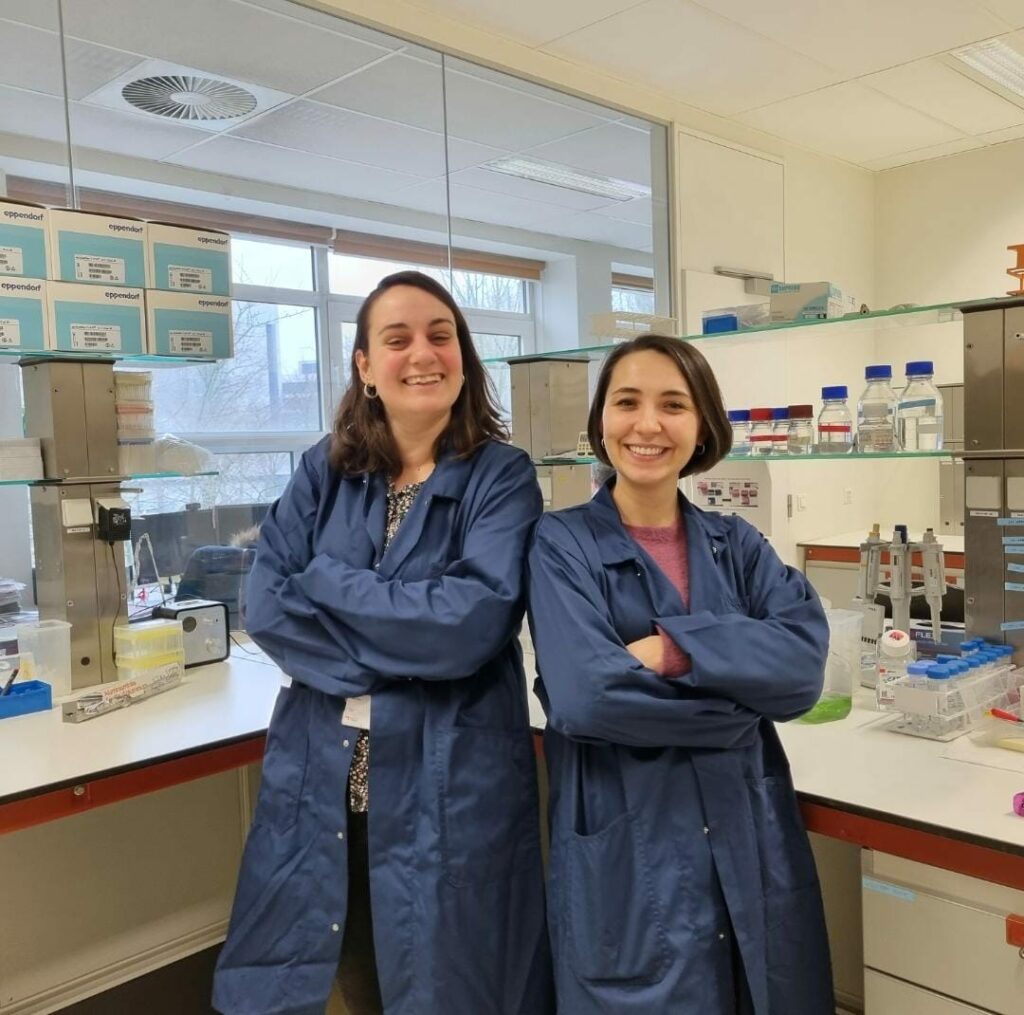
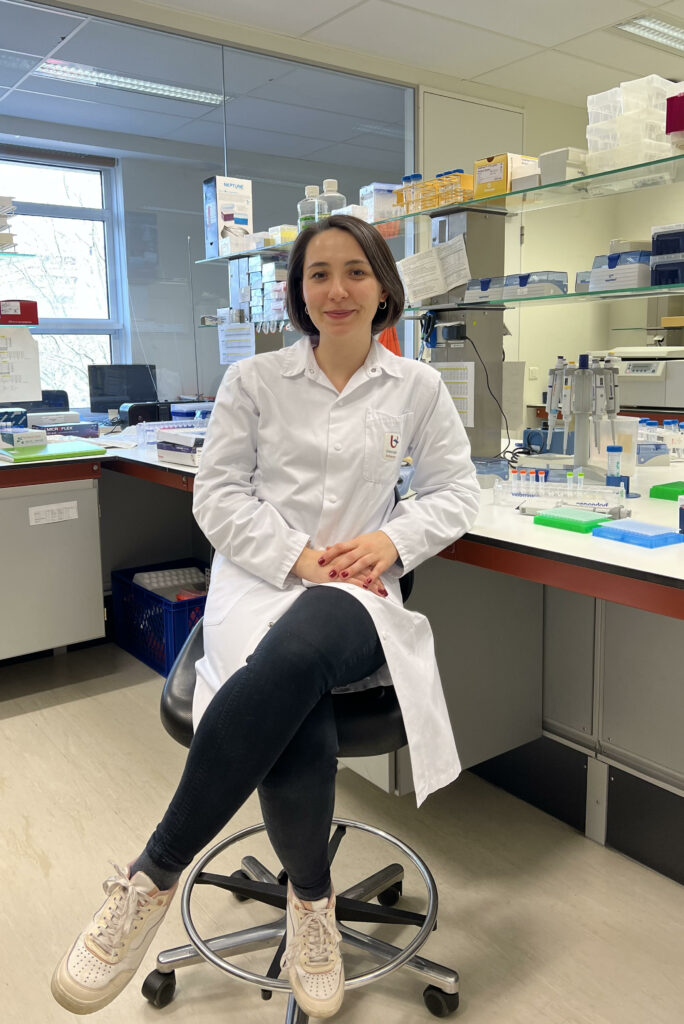
In the lab with my colleague Silvia.
I was also awarded a Marie Sklodowska-Curie Actions (MSCA) Postdoctoral Fellowship. My project aims to investigate structural variants in Charcot-Marie-Tooth disease. Structural variants are genomic variants larger than 50bp, such as large duplications, deletions, insertions, translocations, inversions, repeat expansions and contractions. Current state-of-the-art sequencing technologies lack the sophistication to identify these large structural variants due to technical limitations related to short reads. Therefore, we sought to analyze patient genomes using long-read sequencing technologies, specifically nanopore sequencing. During my postdoctoral fellowship period in the next two years, I will be quite busy with performing long-read sequencing of patient genomes that remained genetically undiagnosed after analyses with short-read technologies. I will analyze this data to look for potentially disease-causing structural variants and functionally characterize the impact of these variants in cellular and/or fly models.
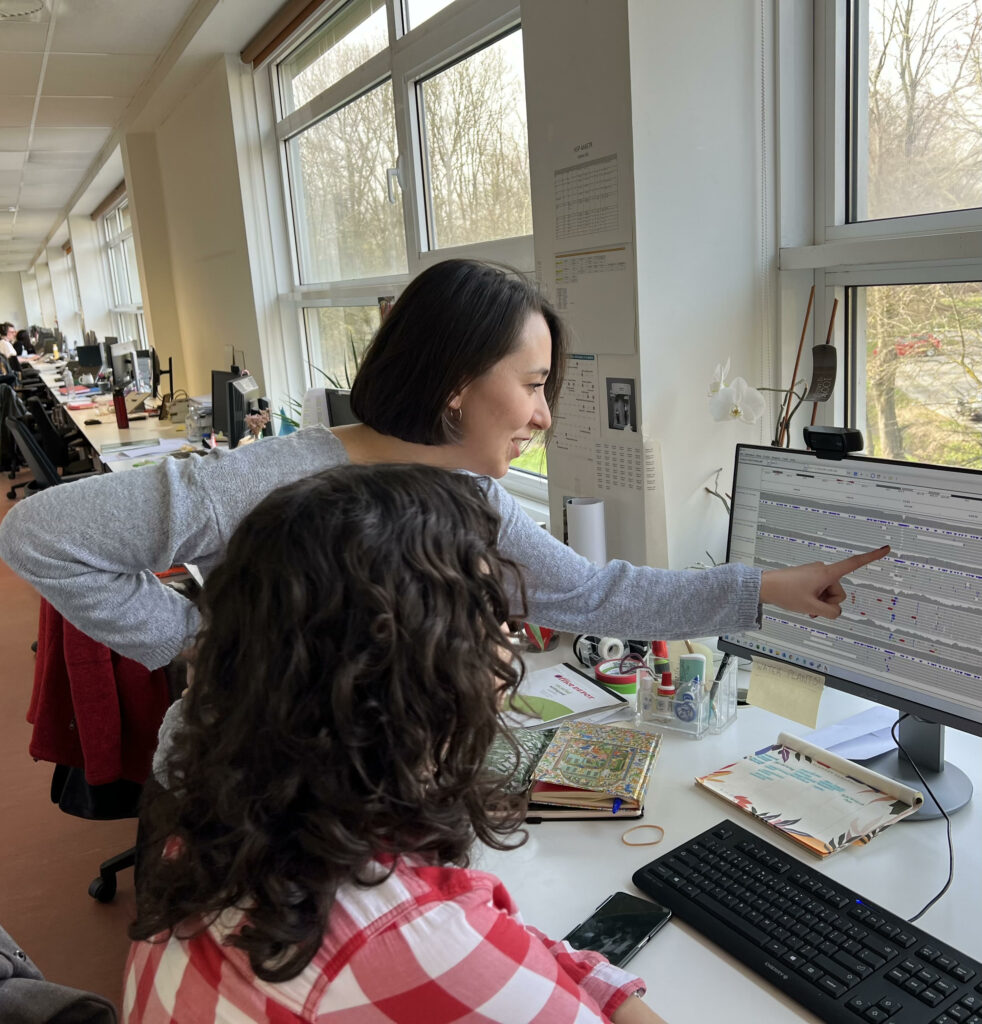
Analysing data in the lab.
Many patients in my study cohort have waited to receive a genetic diagnosis for many years, some even up to 40 years! Thus, my biggest motivation in this project is bringing this new knowledge to affected families and releasing them from their seemingly never-ending “diagnostic odyssey”.
A question I’m frequently asked is “What difference will it make if you find another gene that causes a rare disease?” From a basic science perspective, finding new genes that cause a disease when disrupted provides fundamental information about the role these genes play in healthy tissues. As the underlying molecular pathways are frequently impaired in many different diseases, identification of new disease-causing genes can elevate our understanding of more common diseases too.
Besides, even though individual rare diseases affect a relatively small number of individuals, collectively, rare diseases impact a significant portion of the population worldwide. Moreover, these patients typically have an early disease onset, and they start seeking diagnosis and treatment early on. When we do not have a complete picture of all the genes that cause these conditions, the patients undergo unnecessary and expensive tests and even surgeries, causing decreased quality of life for patients and an increased economic burden for public health systems.
Thus, identifying and characterizing new genetic variations that cause rare diseases is essential for increasing genetic diagnosis rate and providing molecular targets that might be used for therapeutic purposes, both for rare and common disorders. I am very grateful to have received the prestigious MSCA postdoctoral fellowship to research this rare disease. I am also very excited to do my research in this rich scientific environment at UAntwerp!
Article written by Dr. Ayşe Candayan-Niron. Edited by Dr. Bronwen Martin.
You can read more about Ayşe’s research here.
